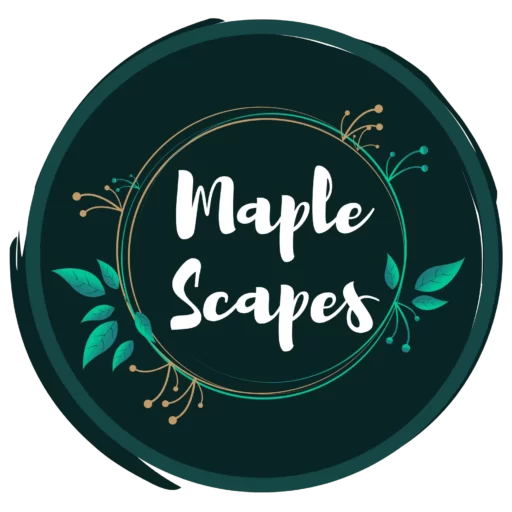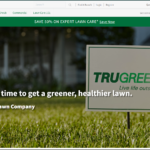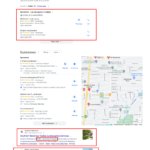One of the most common questions that landscapers ask is: how do I price my landscaping jobs?
Many variables go into determining the cost of a landscaping project, such as the type and quantity of materials, the labor hours, and the overhead costs. You also have to factor in the characteristics of the lawn, such as the area, shape, slope, and obstacles.
How do you estimate the cost of materials, labor, and overhead? How do you account for the size, shape, and condition of the lawn? How do you set a fair and competitive price that attracts customers and earns you a profit?
In this post, we’ll show you how to price landscaping jobs with confidence and ease.
Update: We have updated the calculations and added more steps to make the reading easier. Questions? Add your comment at the end of this page.
How not to price
Never price a way where guessing is your main component. Remove guesswork.
Use your competitors’ pricing to improve your own but do not follow the same pricing or just charge less than what your competitors are charging.
Pricing secret: you need to calculate your costs per hour. You can quote a job however you want – per hour, flat project pricing, or any other way.
Download the template
Download this free template for budgeting, payroll, job management, bidding management, and more.
- Download the estimation template free (or copy it to make it yours)
Credits to Zimmatic on LawnSite for the free Excel file.
How to price what
How much do I charge for Aeration?
Would depend on the size of the lawn, your equipment, and your overheads.
You can charge $200 easily for a 10,000 Sq ft lawn.
The cost of a commercial aerator can easily set you back by $8000. Low-end aerators are fine ($3500) if you’re looking at less than 3 aeration jobs per day.
If you are looking to rent it would cost you $100 for 4-5 hours.
How should I price weed-eating jobs?
You can charge anywhere between $90 to $120 an hour for weed-eating.
What do I charge for a simple mow and time?
For a simple trim and mow, you should minimum ask for $50 per hour.
How much do I charge for debris removal, bag clippings, and dump removal?
You can charge $5 for a bag. Add costs for dumping if your city doesn’t have curbside pickups.
Overall keep it between $80-$100 for an hour.
Additionally, if you are unable to estimate bags, you can charge per truckload- which would be around $20 per load.
How much should I charge for hedging?
It would depend on the height, and width of the hedge, and how long it would take you to do the job.
You can charge $150 for an hour’s worth of time. So if you have 2 people working on it for 2 hours, you can charge $600.
Should I charge prospects for estimates?
Charging for estimates would be a good idea to keep price shoppers away. But if your competition is doing it for free, then would risk losing real prospects.
It is better to give free estimates and include the nominal costs in your day-to-day operating expenses.
What should be the pricing for installing flower beds?
Use the formula: Costs + overhead + profit markup = estimate
Example:
Costs of flowers + Transportation: $1000
Labor cost (100 hours, $20 per hour)= $2000
Equipment rental + Overhead cost = $1500
Taxes = $500
Profit markup = $800
1000+ 2000 + 1500 + 5000 + 800 = $5800
How do I estimate overseeding costs?
Overseeding would be priced about the same as seeding with a spreader.
10lb+/1K area (but you’d end up using more so around 15lb per 1K area) would cost you around $30 for cool season grass.
So if it is a simple overseeding job without the equipment then charge cost x 1.5. Which means $45 for 1000 square ft.
What is Takeoff, estimating, bidding, and proposals
Take offs
Takeoff refers to the process of quantifying and measuring the materials needed for a landscaping project. It involves analyzing the project plans and determining the quantities of various items required.
Steps:
- Review Plans: Carefully examine the project blueprints, site maps, and design drawings.
- Measurements: Use estimation software, electronic scales, or manual measurements to calculate the amount of soil, plants, trees, irrigation piping, and other materials needed.
- Account for Shapes: Consider challenging shapes and curved spaces using specialized tools like the Arc tool.
Landscaping or lawn care estimating
Estimating involves determining the overall cost of a landscaping project. It includes material costs, labor expenses, subcontractor fees, and overhead.
Steps:
- Materials: Price out materials like plants, soil, mulch, rocks, and irrigation components.
- Labor: Estimate the time and effort required for installation, maintenance, and other tasks.
- Overhead: Include indirect costs such as equipment, insurance, and administrative expenses.
- Profit Margin: Add a reasonable profit margin to cover business growth and sustainability.
Bidding
Bidding is the process of submitting a proposal to a client or project owner. It outlines the scope of work, costs, and terms.
Steps:
- Scope of Work: Clearly define what services you will provide, including design, installation, and maintenance.
- Pricing: Present a detailed breakdown of costs, including materials, labor, and any additional charges.
- Timeline: Specify project start and completion dates.
- Terms and Conditions: Include payment terms, warranties, and any other relevant conditions.
Landscaping job proposals
Proposals are formal documents submitted to potential clients. They outline your services, pricing, and other relevant information.
Elements:
- Introduction: Briefly introduce your company and highlight your expertise.
- Project Overview: Describe the landscaping project, including goals and objectives.
- Scope of Work: Detail the specific tasks you will perform.
- Pricing: Provide a comprehensive breakdown of costs.
- Timeline: Specify project milestones and deadlines.
- Terms and Conditions: Include payment terms, warranties, and any legal aspects.
- Contact Information: Provide your contact details for further discussion.
Things to know before quoting a lawn care job
We’ll use a very simple formula to price every job:
Costs + overhead + markup = estimate
Before we dive deep into this formula, you need to know these things before even you go to look for the property.
See Best Landscaping Estimation Software [+Takeoff, AI, Automated Picks]
Your overhead costs
When quoting a lawn care job, understanding your overhead costs is crucial for maintaining profitability.
Overhead costs are the indirect expenses incurred by your business that are not directly tied to a specific project or product. These costs are essential for running your landscaping business but are not directly attributable to any single job or service.
You need to know these before even understanding the scope of any project.
Why you ask?
Because you will incur overheads even if you take a job or not. These are the expenses that you will pay out of pocket if you do not add a portion of it to your estimates.
Examples of overhead costs
- Rent and utilities (Electricity, water, heating, and cooling) – $6000
- Office salaries – $50,000
- Credit card fees – $5000
- Business loans cost – $2000
- Phone bills – $500
- Bank fees – $600
- Landscaping event costs – $5000
- Marketing costs – $10,000
How to calculate overheads
Let’s use the above example. If you have the costs above, you can total it.
Total indirect costs per year: $79,100
Working days in a year: 260
Overhead cost per working day: $79,100/260 days = $304
This means you’re spending $304 every working day whether you work or not, whether you charge for it in your estimates or not.
8 working hours in a day: 304/8 = $40 per hour
This means that for every work where you spend 8 hours in the field or office, you are burning $40.
To the projects you are quoting, apart from your profit and your direct cost:
You need to add $304 for every day you work.
The assumption here is that you are going to work all of those 260 days in the year and you’ll have multiple projects to cover this money.
Alternatively, you can add overheads per job:
You can also calculate and add overhead by predicting how many projects you’ll do in a year. Example: if you do 400 jobs in a year. Divide your overhead cost by number of jobs:
79100/400 = $197.50
You’ll need to add this cost to every project you do. The downside here is, that even if you are doing a $200 job in total, you’ll still need to add in $197.50 as your overhead to it.
If you are picky about the jobs you do, and you know for sure each job is going to be much higher, you can add overheads on a project basis.
Alternatively, you can add overheads as a percentage:
For this, you’ll need a revenue figure. For example, you can target a revenue of $500,000 every year. You need to divide overhead expenses by your target revenue to get the percentage.
Overhead percentage: $79,100/$500,000 = 0.1582 or 15.82%
Now for every job, you need to add this along with your direct cost.
For example: if your direct cost for a job is $3000, your overhead cost would be $3000 and an additional 15.82% of it.
Overhead cost: $3000 x (1.1582) = $3476.4
Now that you have your overhead costs, you can easily price jobs.
Costs + overhead + profit markup = estimate
$3000 + $3476.4 + $3000 = $9476.4
Your Labour or team cost
According to the Bureau of Labor Statistics, in 2022, the average hourly wage for landscaping workers was $17.92. The average hourly wage can be as low as $13.24 and as high as $23.33.
Before a project, you need to understand your labor costs. If you are drawing a salary as the owner of the company – you can leave yourself out of this calculation.
There are direct labor costs and indirect labor costs. You add all of your indirect labor costs in the overhead section.
Direct labor cost is that cost that is directly attributable to your project.
However, your pay for your workers is fine. You can either pay them a salary or pay them by the hour.
For the workers by the hour
You need to record and keep track of the hourly wages of your workers. Every role and skill-based worker would have a different wage.
Your groundskeeper could earn $18 per hour, while a temp worker could be paid $14.
Also, note what you are paying them for overtime as it is going to come in handy when you are preparing estimates.
For workers for whom you pay a salary
- Start by determining the fully loaded cost of an employee. This includes not only their salary but also additional expenses related to their employment.
- Consider the following components:
- Salary: The annual salary of the employee.
- Benefits: Health insurance, retirement plans (e.g., 401k), and other benefits.
- Taxes: Social Security, Medicare, and other payroll taxes.
If you pay a landscape laborer $40,000 per year, the cost to the company could be around $48,000. You need to factor in the cost to the company rather than just the pay.
This means that for every working day, you are spending $40,000/260 working days = $153 per day for every worker that is on this cost.
And if you have them working 8 hours a day, you are spending $20 per hour.
An alternative for labor costs is calculating per-hour wage and adding a 20% markup for compensation, insurance, and other costs.
Labor cost per hour = $20 + 20% of $20 = $20 + $4 = $24 per hour
Your indirect costs
Take inventory of the equipment or rental you have. For every job, you’ll need some equipment. If you have the per-hour cost of your equipment or retail, you can easily add it to the project.
Making yourself aware of the equipment that you own or rent is a must for accurate landscaping estimates.
Calculating indirect costs related to your Car
Cost of your truck/car – $10,000
The expected life of the car – 10 years
Per year cost: $1000
Fuel per year (10,000 miles divide by your average) – for example, 10,000/20 = 500 gallons.
Now multiply by the average fuel cost -500 miles x $5 per gallon= $2500 per year (fuel cost)
Maintenance and insurance per year – for example, $500
Now per year total vehicle cost: $1000 + $500 + $2500 = $4000
How many hours in a day on average you are going to use it for your job?
Take a guess – for example – 2 hours every day. If you work for 260 days in a year, then your total driving hours would be 260 x 2 hours = 520 total hours in a year.
This means that you are going to spend $4000 for 520 hours of your drive in a year.
Per hour cost of your car: $7.69
Now for every project that you do, estimate the running hours of your car – and add this cost to your estimates.
Calculating indirect costs related to your Equipment
Let’s take an example of a mower – you can use the same method for every other piece of equipment that is otherwise not fully consumable for a job.
Purchase price of mower- $2500
Expected life – 3 years
Repairs, maintenance, fuel for 3 years – $2000
Total cost – 4500 for 3 years.
Cost for 1 year – $1500
Calculate per-hour cost when your average running hours for a mower is 3 hours every day.
This means the total hours that the mower is run in a year is 260 days x 3 hours = 780 hours in a year.
Your per-hour running cost of a mower = cost per 1 year/running hours for 1 year
$20 + 20% of $20 = $20 + $4 = $24 per hour
$2 per hour
Electric lawn mowers running cost is cheaper and generally costs 70-80 cents on a dollar.
See Best Landscaping Estimation Software [+Takeoff, AI, Automated Picks]
How to price a landscaping job
Qualify your lead and establish project scope
Inspect the site and measure the property
If you do not want to inspect the site physically, you can measure properties using technology to help you save time. You can then understand if this project is worth taking up and further go to the site to physically inspect it.
You can either use automated measuring software or just use Google Earth. If you’re visiting physically, you can measure it old school by using a measuring wheel.
While measuring (measuring wheel or using estimation software), mark the areas as you would in the blueprint. By marking the area, you’ll be able to do the materials required (do takeoffs) and estimate costs.
One drawback of using estimation software is that you might miss calculating accurate heights. But you’ll still get a good idea if the project is just right for your company.
The drawback of physically inspecting for a landscaping lead is that you incur fuel costs and have to spend some time. Make sure you write off your inspection costs to include in the estimate. If you’ve already calculated your overall fuel costs and your labor time, you do not need to add inspection costs to your estimates.
Establish project scope
After you’ve made up your mind about taking up that project. Ask questions from the client to know what their expectations are and become aware if you can deliver.
This is the most important stage in pricing any landscaping job.
You need to ask your client some questions and then ask yourself a lot of questions.
Take notes and write everything down. Do a complete analysis of what types of activities would be required to complete the project.
Before pricing a landscape contract, you need to get a sense of all the services you have and all other services that would need subcontracting.
You can also send a draft of the generalized scope of work to your client to let them know this is what you are planning. This could help some more picky clients, gain confidence.
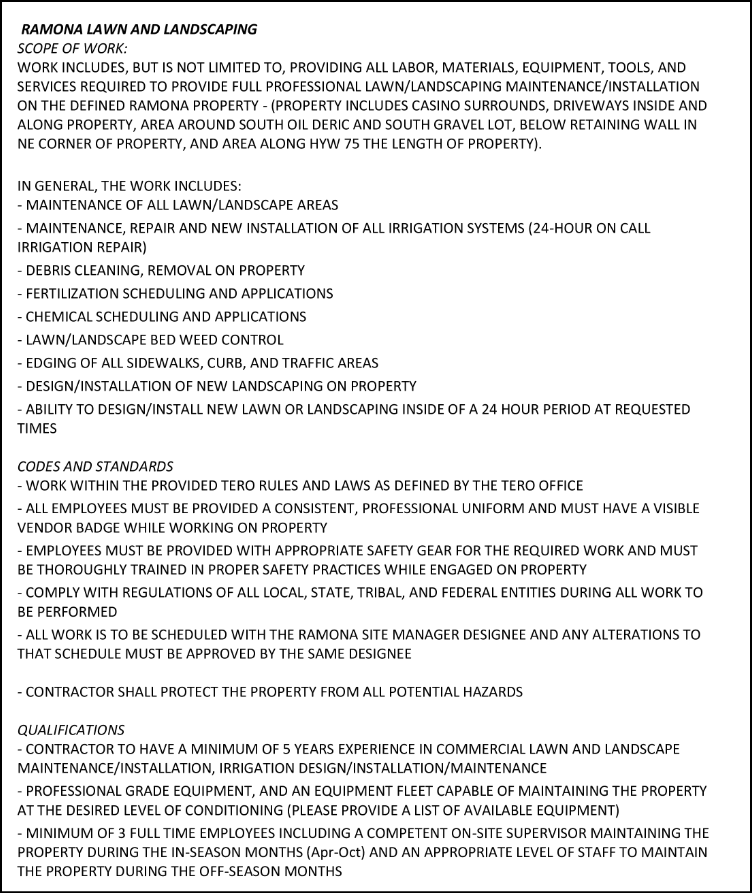
Create your material takeoff (MTO)
Learn more about material takeoffs here.
After you have completed defining the project scope, you should calculate the materials required.
Your bids are as good as your estimates. And your estimates are as good as your material takeoffs.
If you have a blueprint, you can mark the areas with activities and materials required.
For small landscaping jobs, you can do material takeoffs on a piece of paper from your measurements.
The following video is a great example of doing material takeoffs from a blueprint.
Your material takeoff sheet can look like this:
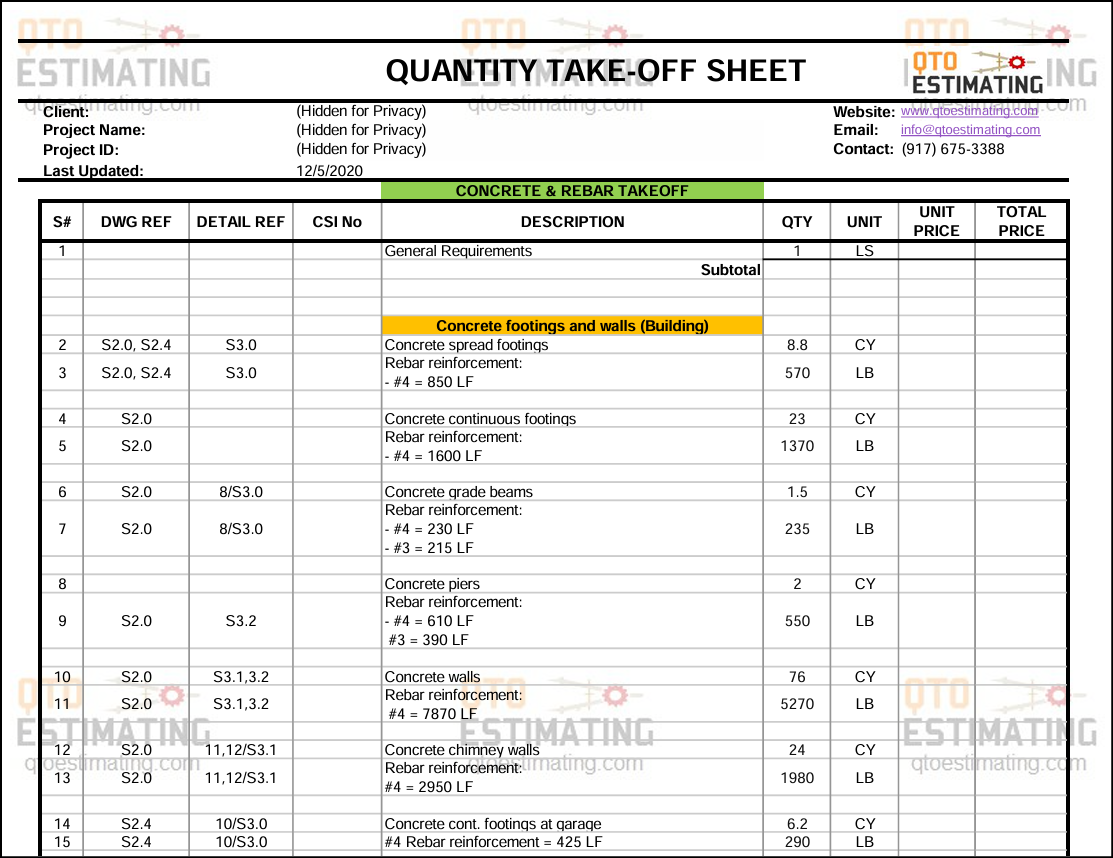
Here is another sample sheet to get your material takeoffs.
Estimate equipment required and labor hours for the job
With the project scope and the material required, list down the equipment you need and add how much time you’d be using it.
Along with your equipment, mark the labor hours required for each activity from your project scope.
Pro tip: Instead of just adding labor hours, specify what type of labor is required and what hours they’ll take to complete the job.
This is important as when estimating the pricing, you will add cost according to what you’re paying to your employees. For eg. an Arborist’s per-hour cost would be higher than a groundskeeper’s but lesser than an architect’s.
With equipment hours, you just need to multiply your equipment running hours with the cost that you know previously.
See Best Landscaping Estimation Software [+Takeoff, AI, Automated Picks]
Estimate pricing for your landscaping job
Now that you know what you have you deliver, and the material required to deliver it, all you need to do now is price the material, your equipment, and labour and add your markup. Once you’re prepared with all the above things, it is fairly easy to calculate estimates and prepare proposals.
For example, A simple lawn-cutting job requires 2 laborers for 4 hours on an X-acre plot. It would require you and your groundskeeper going down to a site in your truck which would take about 60 minutes to and fro driving time. You would need a mower for 3 hours and some consumable items like gloves and a trimmer.
Cost of groundskeeper: $17 x 4 hour = $68
Cost of you for the job: $25 x 4 hour = $100
Cost of your truck: $7.69 x 1 hour = $7.69
Cost of mower (equipment) for the job: $2 x 3 hours = $6
Direct Consumables = $20
This would make your direct costs as = $68 + $100 + $7.69 + $6 + $20 = $201.69
Using the formula for pricing a grass-cutting job:
Costs + overhead + profit markup = estimate
$201.69 + $201.69 (x1.152) + $200 = $634.03
Now this is a very simple example. For complex projects, you need to figure out your subcontractor costs, equipment usage, and your labour hours.
Your costs would also include insurance costs, permit costs, contract costs, and more.
Below is a sample of the landscaping estimate from Stargate Design. You can replicate the same using Excel or just order these forms from them. Maplescapes is not affiliated with Stargate Designs.
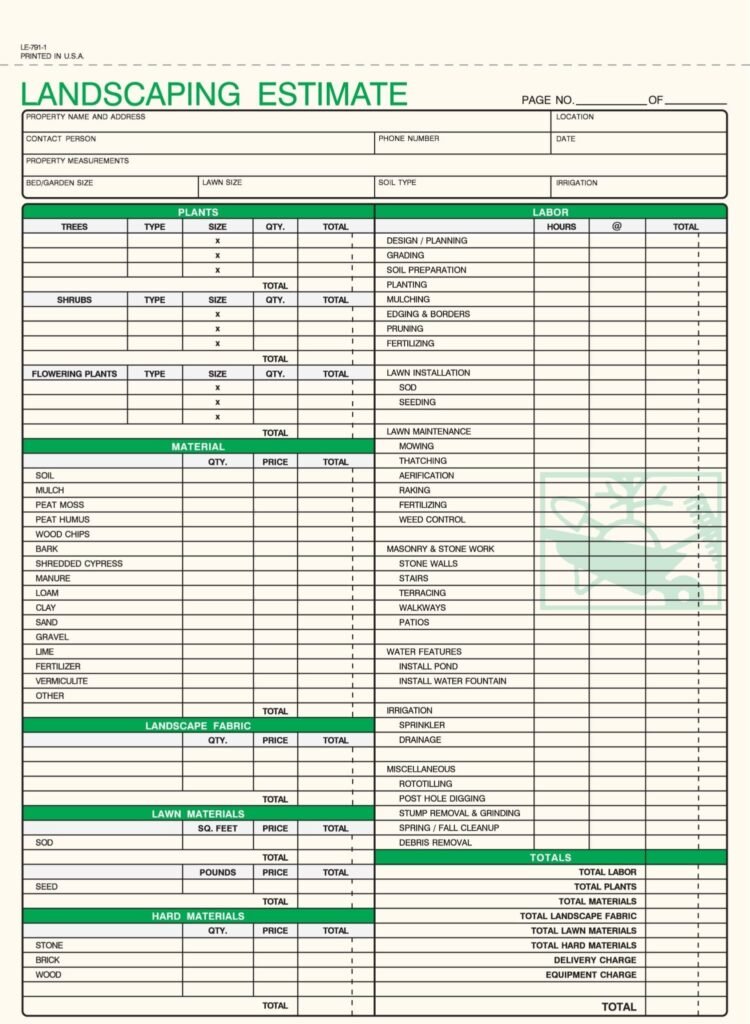
Thats it! now you know how to price landscaping jobs without over or under-quoting. Once you’ve created estimates, you need to create a proposal.
Having an estimate only enables you better price a project. To win the job, you need a good proposal.
Creating landscaping job proposals
The difference between an estimate and a proposal
Estimates: An estimate is essentially a pared-down version of a proposal, with an approximation of potential costs. It’s typically prepared without a comprehensive understanding of the client’s needs and is subject to modifications as more information becomes available. Estimates are not legally binding. They offer a broad overview of the work and services to be provided, the scope of the project, timelines, completion dates, exclusions, the validity period, and other pertinent terms.
Proposals: A proposal is a formal pledge to the client to provide certain services. It delves into the specifics and offers a thorough breakdown of the project scope and timeline. Proposals are more detailed than estimates and usually include a comprehensive action plan, a work schedule, and a detailed cost breakdown.
Elements of a landscaping proposal:
- Project information – location, size of property, site conditions and all other introductory information
- Scope of work – What services that need you will be delivered?
- Timeline – estimated time to complete the activities under the scope of work
- Material, Labour, equipment
- Other expenses – Credit card processing fees (3%), permits, insurance, and additional charges.
- Contingency plan – weather delays, unexpected repairs, faults you find at the site
- Terms and conditions
- Service diagrams
Pricing strategies
Since creating a full-fledged proposal is out of scope for this rather long educational article, we’ll quickly explain the most common compensation types:
- Hourly rate
- Lump sum/ Flat rate
- Project and sub-project rate
Let’s consider a landscaping project where a client wants to redesign their backyard. Here’s how the different pricing models would work:
- Hourly Rate: In this model, you charge for each hour of work. For example, if you charge $50 per hour and work for 8 hours a day, the daily cost would be $400. This model is flexible and can accommodate changes in the project scope. However, it can be difficult to estimate the total cost upfront.
- Lump Sum/Flat Rate: Here, you would assess the project and provide a single, fixed price for the entire job. For instance, after evaluating the work, you might quote a flat rate of $5,000 to complete the backyard redesign. This model provides a clear upfront cost but might be less flexible if changes are needed.
- Project and Sub-Project Rate: This model breaks down the project into smaller parts, each with its own cost. For example, you might charge $2,000 for design, $1,500 for plant selection and planting, and $1,000 for installing a water feature. This allows for detailed cost tracking and can accommodate changes in specific parts of the project.
Each pricing model has its pros and cons, and the best choice depends on the specifics of the project and the preferences of the client and the service provider.
See Best Landscaping Estimation Software [+Takeoff, AI, Automated Picks]
Pricing a backyard redesign – example
Let’s take a real-life example and help you use all three pricing strategies for the project.
Let’s consider a detailed example of a backyard redesign project. We’ll break down the costs into labor, materials, and overheads:
Labor Costs:
Let’s assume we need a landscape architect for the design, a gardener for planting, and a builder for any construction work.
The landscape architect might charge $75 per hour and work for 10 hours on the design.
The gardener might charge $50 per hour and work for 60 hours on planting.
The builder might charge $70 per hour and work for 80 hours on construction.
So, the total labor cost would be ($75 x10) + ($50 x 60) + ($70 x 80) = ($750) + ($3000) + ($5600) = $9350.
Material Costs:
For materials, let’s say we need soil, plants, mulch, and construction materials.
The soil might cost $50 per cubic yard and we need 10 cubic yards.
The plants might cost $20 each and we need 50 plants.
The mulch might cost $5 per bag and we need 100 bags.
The construction materials might cost $2000.
So, the total material cost would be ($50 x 10) + ($20 x 50) + ($5 x 100) + ($2000) = ($500) + ($1000) + ($500) + ($2000) = $4000.
Equipment cost
Let’s consider the equipment needed for a backyard redesign project and their costs:
Excavator: This is used for digging and moving soil. The cost to rent an excavator can range from $200 to $500 per day.
If we need it for 5 days, the cost would be $200 x 5 = $1000.
If the excavator is used for 8 hours each day, the hourly cost would be $200/8 = $25.
Wheelbarrow: This is used for transporting soil, mulch, and other materials.
A good wheelbarrow can cost around $50 to $100.
If we use it for 100 hours throughout the project, the hourly cost would be $100/100 = $1.
Shovels and Spades:
A good shovel or spade can cost around $10 to $50.
If we use them for 100 hours throughout the project, the hourly cost would be $50/100 = $0.5.
Lawn Mower:
We calculated the cost of running the mower per hour – $2
If we use it for 20 hours throughout the project, the total cost would be $2 x 20 = $40.
Garden Hose and Sprinkler System:
A good garden hose and sprinkler system can cost around $50 to $200.
If we use them for 50 hours throughout the project, the hourly cost would be $200/50 = $4.
So, the total equipment cost for this backyard redesign project would be $1000 (excavator) + $100 (wheelbarrow) + $50 (shovels and spades) + $40 (lawn mower) + $200 (garden hose and sprinkler system) = $1390.
Direct and indrect costs: $9350 (labor) + $4000 (materials) + $1390 (equipment) = $14,740
Overhead Costs:
Overhead costs include expenses like rent, utilities, marketing, administration, vehicle, and insurance.
We know from above, that we need to multiply our costs (direct and indirect) with 1.152 to get the overhead cost.
Overhead costs = $14,740 x 1.152 = $16,980
Total cost:
The total cost of this backyard redesign project including labor, materials, overheads, work permits, insurance, and equipment, would be:
$9350 (labor) + $4000 (materials) + $16980 (overheads) + $100 (work permits) + $540 (insurance) + $14740 (equipment) = $45710.
All costs including overhead + profit markup = estimate
Estimate: $45710 + $20,000 = $65,710
Please note that these are just example costs and the actual costs can vary depending on various factors such as the complexity of the project, the specific materials used, the local cost of labor, and the overhead costs of the landscaping company. It’s always important to have clear communication and a written agreement to avoid misunderstandings.
Once you know the project scope and you have material takeoffs along with estimating labor hours, you can use any one of the below pricing strategies:
Hourly rate pricing strategy for new landscaping jobs
If this project takes 150 hours (10 hours of design + 60 hours of planting + 80 hours of construction)
You can charge the client: $65,710/150 hours = $438.06 per hour
An alternative way to use this strategy is to calculate your costs by activity and each sub-project.
You can calculate costs per activity and estimate hours to do that activity.
Example: In a backyard redesign, mulching would cost the client $60 per hour. The design cost per hour would be $150 per hour.
Flat rate pricing
Flat pricing would mean you quote the total charge of $65,710 to the customer.
Project and sub-project rate pricing
You need to calculate sub-project costs.
For example, the total cost of mulching from the above backyard redesign project would be $500 + your profit of $250 = $750
Total Planting Cost = Labor Cost for Planting + Material Cost for Plants + profit = $1250 + $1000 + 1200 = $1450
and so on…
With this, your total would be more than the lump sum pricing of $65,710 for the project.
Project and sub-project rate pricing is more flexible to changes in the project. If the scope of a sub-project changes, it can be re-estimated without affecting the rest of the project. This flexibility can lead to higher costs if the project scope expands or unexpected challenges arise.
Additionally, your estimation would include the sub-projects as if they are being carried out individually. This means you might not include the same labor hours and your materials and indirect costs change.
See Best Landscaping Estimation Software [+Takeoff, AI, Automated Picks]
Conclusion
Landscaping is a competitive and rewarding business, but it requires careful planning and pricing to succeed. In this article, we have covered the basics of how to price a landscaping job, from the initial takeoff and estimating, to the bidding and proposal stages. We have also discussed some of the factors that affect your costs and profits, such as overhead, labor, equipment, and indirect costs. Finally, we have explored some of the pricing strategies that you can use to attract and retain customers, such as value-based pricing, cost-plus pricing, and competitive pricing.
By following the steps and tips in this article, you can create accurate and professional landscaping estimates and proposals that will help you win more jobs and grow your business. Remember to always qualify your leads, create detailed material takeoffs, estimate your labor and equipment costs, and use a pricing strategy that reflects your value and expertise. Happy landscaping!